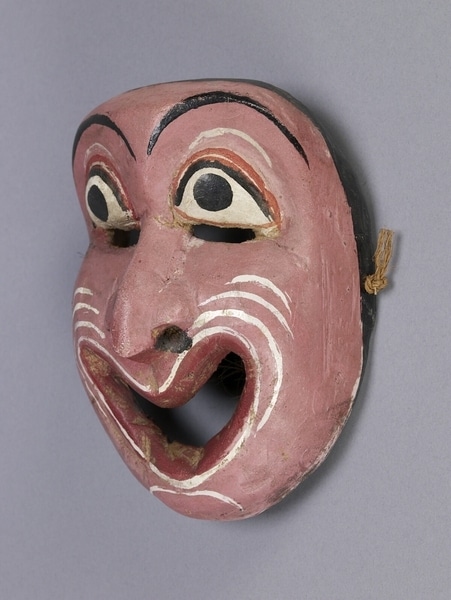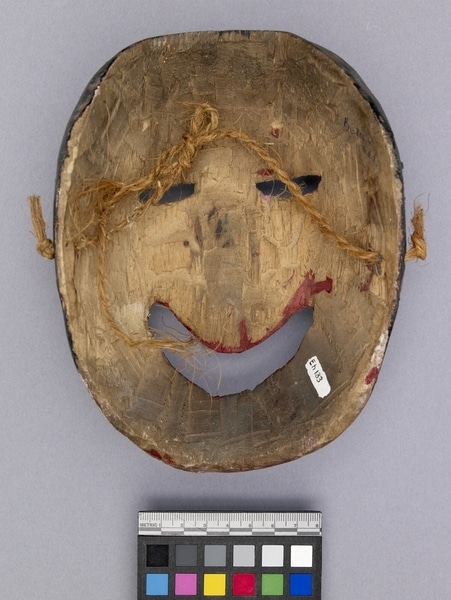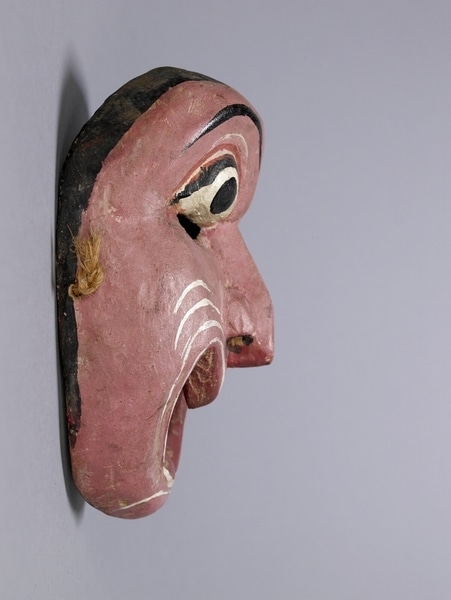Mask Item Number: Eh133 from the MOA: University of British Columbia




Description
Mask portraying Buta Sanniya (which represents derangement, distortion and listlessness of limbs) with a pink face that has arched eyebrows, semicircular eyes with crescent-shaped holes underneath, flared black nostrils, a mouth with upturned corners and a philtrum that points downwards. Three white lines on each cheek follow contour of the mouth corners, and the mouth and chin are outlined in white. A strand of twine is knotted through small holes on either side of the mask. The words "Buta - mad" are written in ink on the inside of the mask near the right eye.
History Of Use
Mask used in either Kolam or Sanni ceremony. The Kolam is a dance drama with episodes representing village life in a satiric and humourous way. Characters are masked. The Sanni ceremony is a healing ritual in which eighteen disease causing demons are propitiated.
Iconographic Meaning
Open upturned mouth, white lines around it, and dark paint inside nostrils suggest this mask may represent a demon. White-red shade, however, usually indicates a benign character.
Cultural Context
ritual;exorcism
Item History
- Made in Deniyia, Sri Lanka ? before 1983
- Collected during 1983
- Owned by Ari Ebert
- Owned by Jason Schoonover before June 21, 1984
- Received from Museum of Anthropology Shop Volunteers (Funding source) and Jason Schoonover (Seller) on June 21, 1984
What
Who
- Culture
- Sinhalese
- Previous Owner
- Ari Ebert and Jason Schoonover
- Received from
- Museum of Anthropology Shop Volunteers (Funding source) and Jason Schoonover (Seller)
Where
- Holding Institution
- MOA: University of British Columbia
- Made in
- Deniyia, Sri Lanka ?
When
- Creation Date
- before 1983
- Collection Date
- during 1983
- Ownership Date
- before June 21, 1984
- Acquisition Date
- on June 21, 1984
Other
- Condition
- fair
- Accession Number
- 0972/0023